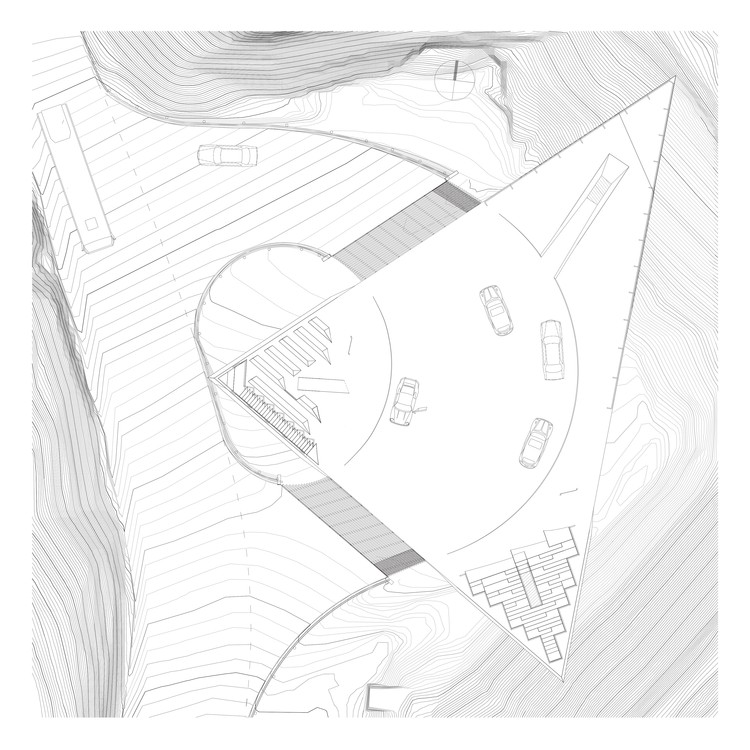
-
Architects: CODE: arkitektur
- Area: 850 m²
- Year: 2016
-
Photographs:Jiri Havran
-
Manufacturers: PV panels, Sunnfjord Betong, Sunnfjord Industri

Text description provided by the architects. The site is known as Utsikten (“The View”) and is a natural place to stop when driving over the Gaular mountain along the western coast of Norway. For those who have made the trek over the mountain itself, the site affords a sudden and surprising vista overlooking a majestic landscape. Conversely, for those driving up from below, Utsikten constitutes the ever visible apex of the ascent rising up through a series of hairpin bends.

CODE’s project at Utsikten is a large, triangular concrete platform situated right at the side of the road. The platform is 80 cm thick but appears to rest lightly atop the terrain with raised, wing-like corners that protrude outwards and upwards into the air. Similar to how a picnic blanket is neatly arranged in order to create the proper setting for a meal, the concrete platform at Utsikten has been developed to create the proper setting for the entire stopover. The cars drive all the way up to the outlook, and visitors can move around between the corners to experience the spectacular scenery from various angles.

In order to ensure the optimal placement for the finished project and exploit the site’s various qualities, the architects sketched the concept at full scale at the site itself. With the aid of a crane and ropes, the structure was constructed as a wire model over several rounds before finally being transferred into a 3D model, drawings, and the finished product.


The work on the concrete construction proved to be quite challenging because of the mountain’s location, the complex geometry, and the high demands to quality. In order to be as prepared as possible, the various actors involved in the construction project first participated in a trial construction of large sections of the platform in order to make common experiences and quality assure the given choices and approaches.

The finished platform appears as an independent, geometric, and precise object in the landscape. The materials and technology are familiar and robust, while it is the shape itself that is spectacular. Over time the concrete will acquire natural vegetation and its colour will approximate that of the surrounding mountainsides. The rails have been made from thick steel pipes as a visually conspicuous seam along the platform’s edges and reliefs, with outstretched nets that are more or less transparent. The concrete includes surfaces that have been milled, honed, sandblasted or board-sheathed in order to accentuate the platform’s shape and zonal divisions. The raised corners contain holes and reliefs that provide sitting and standing room, access to the restrooms, and egresses to the terrain, or that serve as an outlet for the rainwater amassed at the platform. During rainy weather it is also possible to seek shelter beneath these corners.





























